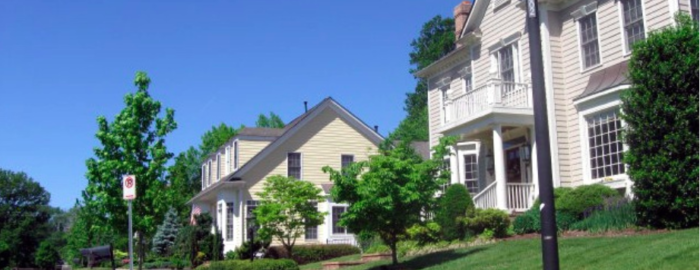You wake up in your Adams Morgan home, go downstairs to make the coffee, sleepily nod to your partner — who, incidentally, will be the only “co-worker” you’ll see all day. You hurry to your “office” (which may very well be your kitchen) to get some work done before the kids wake up and you’ve got to get them ready for a day of “distance learning” right next to you at the kitchen table. By the end of the day, you’re desperate to get out of the house, if even just for a chance to take a walk around the block or water your plants. All of which is a lot more enticing when you live in the suburbs — in our current mask-wearing, social-distancing climate.
Remote work and online learning is the current state of things in the DC Metro, and for most other major cities around the world. It’s no surprise, then, that early data is showing a trend of moving from urban to suburban communities.
Zillow has seen a current surge in urban high-end listings (i.e. people are likely selling their high-end Washington, D.C. apartments and houses in order to make the move to luxury homes in areas like Montgomery County and Northern Virginia). Washington, D.C., specifically, has seen a 20% month-over-month increase in urban high-end listings on the market.
Why are people moving?
According to a survey from HomeLight, the top reasons people are moving in this current climate are:
- More interior space
- Desire to own
- Move from city to suburbs
- More outdoor space
What are people looking from in a home?
For many in urban areas, homes used to be a place to sleep, change your clothes, and maybe make a cup of coffee before you head out for the day. Now, the focus is shifting from what’s outside your door, to what’s inside it. According to that same survey, the top features that people are now looking for are:
- A designated home office
- Less dense location
- Single-family living
- Private and spacious outdoor area
- Well-appointed kitchen
(Note: A private pool, access to nature, designated home gym, or dual main suites were runner-up choices)
Will the suburban flock last?
This is the million-dollar question. The question to which nobody really has an answer to. Lawrence Yun, Chief Economist at the National Association of Realtors says,
“Homebuyers considering a move to the suburbs is a growing possibility after a decade of urban downtown revival…Greater work-from-home options and flexibility will likely remain beyond the virus and any forthcoming vaccine.”
As Lisa Prevost says in a recent New York Times article, the answer to this question, leads to so many others:
- Will the trend last the summer?
- What if there’s a second wave of the virus?
- How many suburban renters will choose to become permanent residents?
- What will happen with the economy?
There are others that believe that the suburban migration is only temporary. Jonathan Miller, president and chief executive of Miller Samuel appraisers does not think that this shift in thinking continues after there is a vaccine. He says,
“Only because we saw this after 9/11. We saw this outbound migration for three years and then it reversed.”
Bottom Line
We don’t have answers to whether or not this trend will last. Nobody does because what we are experiencing is unprecedented. All we do know is that buyers are returning to the market and sellers are listing again in the DC Metro. If you’re one of those people, we’re guessing you have lots of questions. The Estridge Group is happy to take all of them. Contact us anytime. We’ll get through this together.










